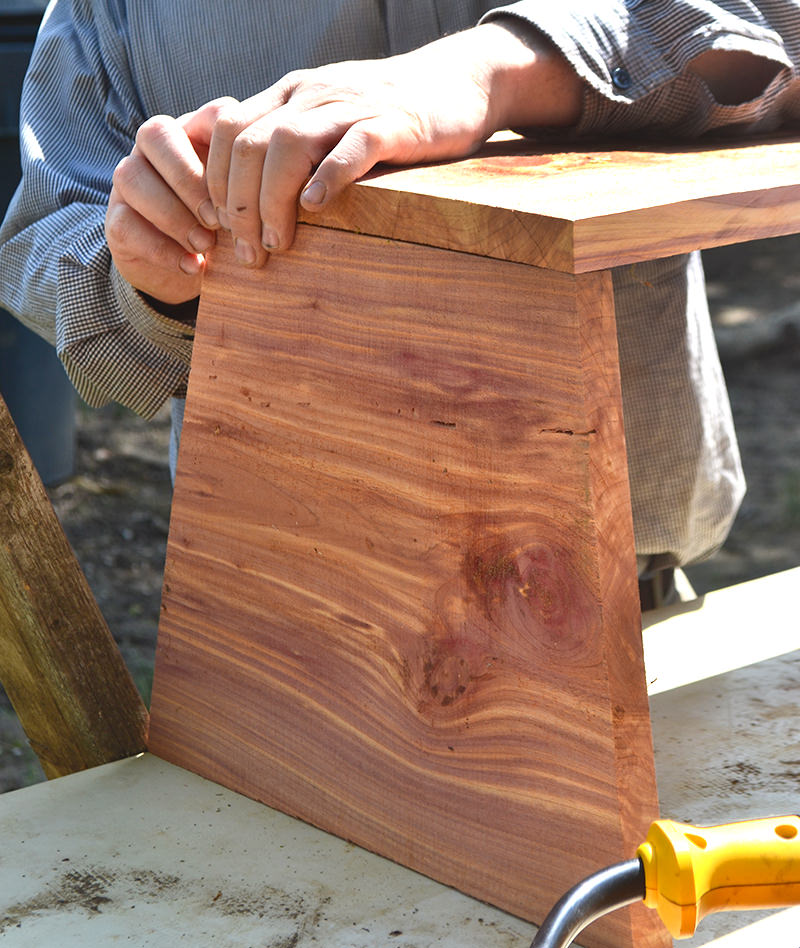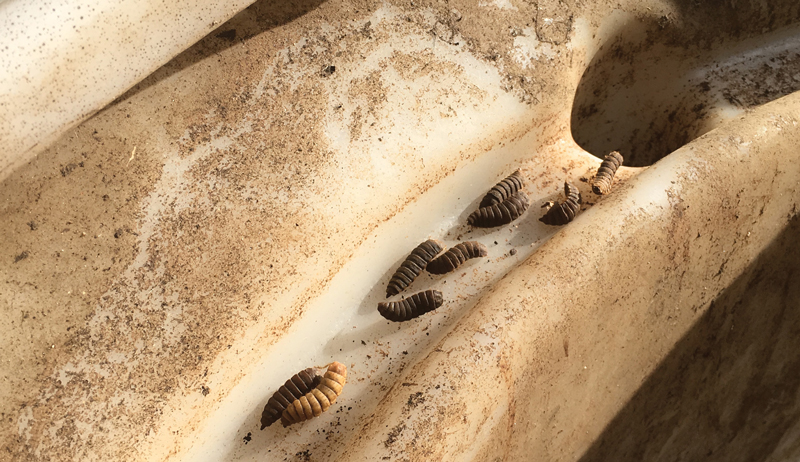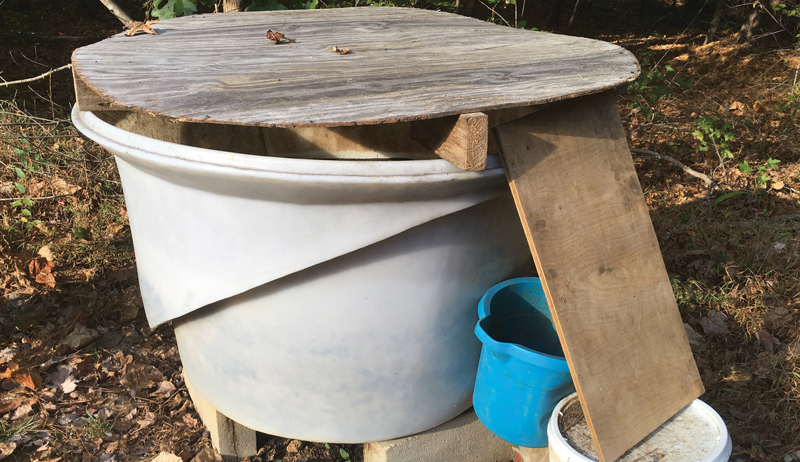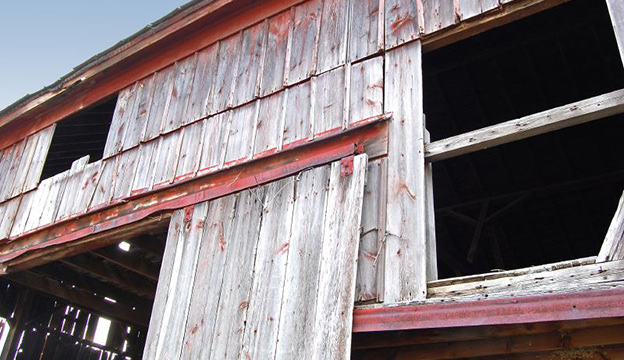Brooding chicks is easy and fun if you know a bit about their temperature, nutrition and shelter needs. How do you brood chicks? Brooding, done correctly, can be a wonderful experience and it can be a great alternative to buying adult birds.
Brooding Chicks Defined
Technically, brooding chicks is defined as the period from hatching until supplemental heat is no longer needed. For most people, this means the time period that the chicks need to be kept inside or with a heat lamp, which is generally somewhere between three to eight weeks. The smaller and slower-growing the breed is, the longer it will need the support of brooding.
This is a critical time for your chicks. They’re growing rapidly; they can’t handle most outdoor environments because they don’t regulate temperature as adult chickens do; and they’re at their most vulnerable for disease. Brooding is also when incorrect incubation or poor parent stock is most obvious; sickly chicks are more difficult to raise and require more extensive management.
Luckily, there are a few ways that brooding chicks can be explained to make sense of it all. Many of these categories are the same for adult-bird management, but instead of a one-size-fits-all mentality, you will have to alter and change the environment and the rules as your birds grow.
Eight Things To Remember When Brooding Chicks
There are eight different things chicken keepers need to remember when they are brooding any kind of bird, be it chickens, turkeys or quail:
- light
- temperature
- ventilation
- humidity
- bedding
- feed
- water
- mortality
1. Light
Your lighting fixture fills two needs: heat and light to see by. Most backyard chickens are raised with heat lamps hung over the brooder. These lamps are easy to find at local feed-supply stores or online and are easy on the wallet—something that can’t be said for pan brooders or heaters. The temperature generated by a heat lamp is easily adjusted by raising and lowering the lamp. Remember, never hang lamps by their electrical cord, as his is the easiest way to start a fire; instead, use a chain or rope.
Pan brooders or heaters are generally used in larger brooding situations (i.e., commercial flocks) and are large and expensive for the average small flock. In fact, even mid-sized flocks often use multiple heat lamps to save the initial investment and ongoing expense of other heating options.
Heat lamps also offer another positive: color conditioning. Color conditioning uses different colors of lamps (red being the most common) to change chick behavior. While studies on blue, yellow and green lighting have not shown any significant change in chick behavior, red lamps have been shown to reduce aggression in most species of poultry. For this reason, most vendors will offer red lights next to their typical incandescent models.
2. Temperature
While it sounds easy to adjust your brooder temperature by changing the height of your lamp, in practice, it can be difficult. Technically, you should have a thermometer in the center of your brooder and a thermometer on the edge of your brooder, with at most a 10-degree difference between the two thermometers. Different chick ages have different temperature requirements; on the first day, start with the center temperature being 90 to 95 degrees F, and reduce by 5 degrees each week.
In reality, most people follow the cluster rule: If your brooding chicks are clustered all under the lamp, it’s too cool, and if your brooding chicks are all clustered around the edge of the brooder, it’s too warm. Optimally, they should be spread throughout the brooder comfortably moving around.
The main thing to remember if you are maintaining the temperature of your brooder via a method other than heat lamps is that chickens aren’t always very good at self-preservation. Using a heating pad can result in severe burns on the feet and keel, and using a heat source that is horizontal to the brooder, such as a standing heater, can cause some chicks to burn or overheat as the ones behind push them too close to the heat source. Next to heat lamps, overhead heaters, such as lamp or pan brooders, tend to be the safest method giving the chicks the possibility of searching their temperature comfort zone.
3. Ventilation
Similar to light and heating, ventilation and humidity are very closely related. High ventilation lowers your humidity by blowing the water vapor in the air away, and low ventilation can cause humidity to become too high, creating a soggy environment. Balancing the two against each other tends to be easy in small brooding situations but becomes more difficult with a larger flock size.
Ventilation is primarily important for preventing ammonia fumes; anyone who has been brooding chicks in an enclosed area knows that how potent that eye-burning odor in an uncleaned brooder can get. However, you must be careful not to become overzealous with your ventilating and create drafts that can chill the chicks. Most brooders with an open top or a mesh/wire top will have adequate ventilation without any fans needed. Just be aware that high-sided tubs or closed barns may not have adequate ventilation down on the floor where the chicks are, even if there is airflow through the top regions.
4. Humidity
Humidity isn’t as much an issue with small flocks as it is for commercial flocks: Few small flock brooders are fully closed systems that allow humidity to build up to worrying levels. Check your bedding to make sure it hasn’t grown moist; if it’s reasonably dry, then your humidity is fine. If the litter is wet and you feel that the chicks won’t become chilled, you can increase ventilation as a way to dry the litter. If you want to be very prepared, you can buy a hygrometer to measure the humidity during brooding: During the first week, 30 to 50 percent is considered best, while 40 to 60 percent after the first week is recommended.
5. Bedding
There are two basic rules of thumb for brooder bedding: Change it often and change it well.
In small flocks, changing your bedding is the best way to prevent mold, smell and disease. Using absorbent litter material is critical: Pine shavings and rice hulls are best. Straw, hardwood shavings (particularly oak) and paper are not actually good options despite the fact that they’re used commonly. Straw doesn’t absorb water from feces well and tends to forms mats easily. Hardwood shavings can have toxins from mold on them, and paper is not absorbent and can also have toxic inks. A properly absorbent bedding will reduce your smell and dust quotients, and clean bedding will reduce disease and mortality; it’s a win-win!
6. Feeding Baby Chicks
Nutrition is often the trickiest part for new poultry owners. When do you feed a starter versus a layer versus a grower diet? What’s the difference anyhow?
Starter feed is developed to be correct nutritionally for growing birds, and to make things even easier, you can use the same starter for meat and layer birds. It’s formulated to be high in protein—around 20 percent—and should be fed for the first 8 weeks of life.
The range of how long to feed depends on your breed. Slow-growing show breeds need that nutritional support for longer, while the fast-growing meat birds are ready to move onto their personal in-between food (often called grower food) within a few weeks. Layer and show breeds skip this step and are transitioned directly onto a maintenance adult diet, which is often called a layer diet. Meanwhile, meat birds are transitioned onto their final diet, called finisher feed, a few weeks before butchering.
Another worry owners who are brooding chicks have about their feed concerns hormones and antibiotics. Many people are trying to raise their flocks organically and have all sorts of questions for which the media and the internet have a variety of conflicting answers. Firstly, concerning hormones— no poultry feed contains hormones of any form. The reason for this is two-fold; a shorter life span and a lower individual value make using hormones in poultry economically silly for commercial producers. Since our backyard feed is also driven by economics and public opinion, no hormones are added there either.
Antibiotics are another matter. Feed is often sold as “medicated,” which usually means it contains a medication called amprolium, which is used exclusively for the treatment of coccidiosis, caused by organisms called protozoa that live in your chickens’ intestines. The good news is that amprolium is technically an antiparasitic: It kills these protozoa by denying them thiamine, an essential nutrient. Studies have shown that amprolium is safe to use in chickens (at recommended doses, of course) and does not transfer to humans in the meat or eggs. However, many people prefer to skip the question of antibiotics or medication altogether. Luckily for these people, there has been an upsurge of organic and medication-free feed in the last 10 years. Most feed-supply stores carry alternative options to the main brands. Just make sure to compare your labels to a list of required nutrients as not all of these feeds are nutritionally balanced for chicks.
You also have to consider what is dispensing your feed. Chicks in their first few days of life need easily accessible food. Place paper down under the heat lamps with food sprinkled on it for the first few days, with food in semi-open to open containers at the edge of the paper.
Trough feeders or pan feeders are best for this time period; it’s worth some feces in your food for those important days to make sure you don’t have starved-out chicks. Trough feeders are particularly nice, as most have a roof attachment with head holes for when chicks are a little older to prevent them from pooping in the feeder. Bell feeders are another option for older chicks; just be careful with smaller chicks, as they may try to climb inside the feeder and get stuck!
7. Water
The water system you choose for brooding chicks dictates the watering system you should use later in life. Chickens can relearn a drinking system, but you may have issues with dehydration or even mortality while they are getting the hang of the new waterer. As such, if your birds drink from a bucket or bell drinker as adults, you should have a bell waterer for them as chicks. If you are lucky enough to have nipple drinkers in your pens, chicks will need to be started on a nipple system. It’s inadvisable to have an open dish or pans filled with water in a brooder as chicks can fall in and drown or become chilled in even a very shallow dish.
You should change the water twice daily to reduce fecal, food or bedding contamination. Water systems should be scrubbed or flushed/washed with a diluted bleach system weekly to prevent mold and bacterial growth (1 tablespoon chlorine bleach to 1 gallon of water). In addition, water should always be available; don’t remove the waterer at night or for more than 15 minutes at any time.
If you need to give any medications, particularly antibiotics or mineral/vitamin additives, that are dispensed via water, change out the water once daily to prevent wasting your medicine. Talk with your veterinarian for chicken medication because only a few drugs are approved for their use in poultry.
8. Brooding Chick Mortality
As depressing as it is, mortality is a sad side effect of brooding. No matter how perfect your system is, there will be deaths. Some of these may be from poor chick quality, pecking or starvation from competition. A little bit of mortality is to be expected, but excessive mortality is a good indicator that something is going wrong. Keeping track of your losses will help you know if something is wrong and may allow you to figure out what the exact cause could be.
Expect to lose 1 to 2 percent of your chicks during the brooding period; this will increase if they were chilled, dehydrated, had infected navels or were obtained from poor or young breeding stocks. Losing more than this during your first week indicates a bad chick source, a bad batch of chicks or improper management; losing them after the first week is always incorrect management. By keeping track of your losses, you can tell whether you should be looking more closely at your incubation system, your initial management habits or your long-term brooding management.
If you do start having excessive mortality, a necropsy is never a bad idea. Necropsies can pick up on specific causes of death and that can go a long ways toward preventing a similar issue in the future. Contact your local state laboratory for necropsy services; some states subsidize this service.
A Brooder for Brooding Chicks
So, now that you have all your aspects of brooding chicks under control, how do you get started? You should first begin with where you plan to raise these future chicks. (We say “future chicks” because setting up a brooder should not happen when you already have an incubator or box of chicks ready to place.)
Incubators should be ready to go when the chicks are placed, which means a minimum of six hours of heating beforehand. The larger the brooding area, the earlier you will need to begin your preplacement heating. Preferably, you have been monitoring the temperature in your brooder for 12 to 24 hours to make sure there won’t be any unforeseen fluctuations.
Everything must be cleaned and disinfected between broods. Bleach, sunlight and some good old-fashioned scrubbing are usually enough to prevent disease transference between flocks. Remember, disinfection without cleaning is not effective.
When you are setting up the logistics of the brooder, keep the feeder and waterer next to the heat source; if chicks have to explore, some won’t find the them. A good brooding setup should allow the chicks to sit directly under or by their heat source and easily see the food and water. What you use as a brooder can vary quite a lot. Plastic kiddie pools are very popular, as are plastic bins, cardboard rings and wooden boxes. Honestly, any pen or setup that meets the needs listed previously and can be easily cleaned will make a good brooder.
Brooding outdoors will require a little extra monitoring to make sure that drafts or external temperature changes don’t throw off your carefully set-up little environment. Brooding indoors takes out some of the temperature variations but opens up the dangers of cats, dogs, small children and dust from the chicks in your living quarters.
Brooding is an ongoing learning experience but follow these rules and you will be well on your way to being a master brooder. The good news is that brooding is a relatively small fraction of your chickens’ lives. Once the chicks are feathered and able to control their own body temperatures or the outdoor climate is favorable enough, they can go outside to begin their grown-up life. This is usually somewhere between 3 and 8 weeks of age, depending on the breed. Many people will still have a night light heat lamp to make sure all their hard work isn’t undone by one cold night and continue to provide starter feed for a few extra weeks.
Poultry Science is a column written by faculty from the school of veterinary medicine at the University of California, Davis, and the University of California Cooperative Extension. This edition comes to you from Emily Lane and Rodrigo Gallardo.
This article about brooding chicks was written for Chickens magazine. Click here to subscribe.





























